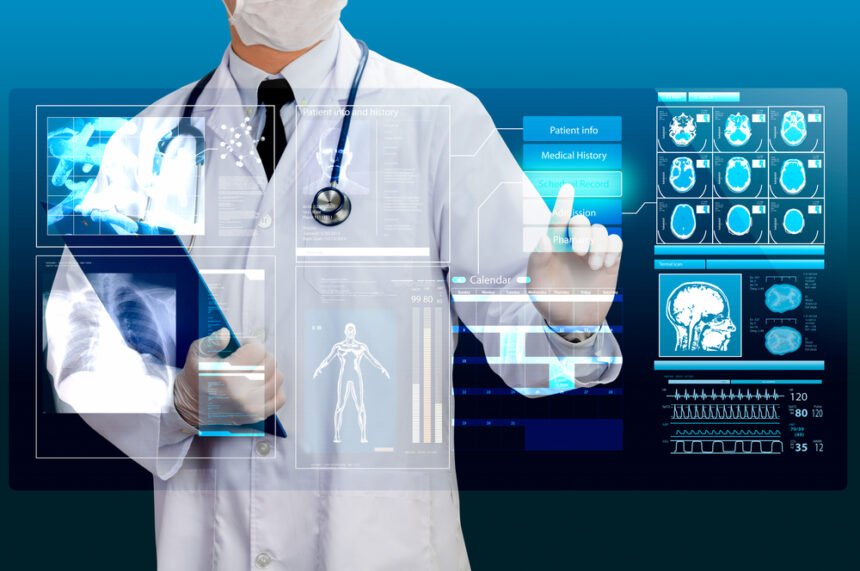What do you call something that kills 5 million people without spelling the term “disease?” UNDIAGNOSED.
- 6 emerging diagnostic innovations
- Diagnostic innovation #1: AI-Based software platforms
- Diagnostic innovation #2: Healthcare IoT or IoMT
- Diagnostic innovations #3: Big data and analytics
- Diagnostic innovation #4: Blockchain
- Diagnostic innovation #5: Cloud computing
- Diagnostic innovation #6: Virtual reality
- The final call
You know how the diagnosis is the first line of defense against diseases. But undiagnosed conditions, misdiagnosis, slow diagnosis, and in some cases, overdiagnosis can change the outcome negatively.
Since the efficiency of treatment is dependent on the accuracy of the diagnostics— medical industries are pushing for quicker and more precise diagnostic results. Another reason why diagnosis needs to be right on the money is because
- 70% of the medical decisions are dependent on diagnostic results (1)
- and health care systems also want to avoid long-term complications.
So there are radical digital and innovation movements in diagnostics that make determinism more accurate. Let’s find out innovative technologies that are changing the diagnostic landscape.
6 emerging diagnostic innovations
Here’s the list of emerging diagnostic technologies you should watch out for:
Diagnostic innovation #1: AI-Based software platforms
AI-based software programs analyze troves of patient data and past treatments to determine what suits them the most. These tools also help you detect diseases efficiently.
For example,
- Oncologists have intelligent AI systems to detect cancerous cells.
- Pathologists use machine learning systems to determine issues in the tissues.
The other use cases include phenotype recognitions. And many more!! Experts observe physical properties such as appearance and development with medical imaging to determine rare conditions.
You can also use AI-based systems to bucket people into the shared characteristics and observe correlational patterns to diagnose and prevent diseases.
Diagnostic innovation #2: Healthcare IoT or IoMT
Healthcare IoT is another diagnostic innovation being served to patients without minimal human interaction. It includes wearable and implanted devices attached to your body.
They collect medical data and repurpose them into visual diagnostic results. The most visible example of IoMT is Apple’s ECG watch. Such innovative wearables monitor
- glucose level
- heart rate
- mood and depression
… to diagnose any disease lurking around. The pre-diagnosis of any disease helps patients make early decisions, and doctors prescribe the right medical treatments.
IoMT also uses sensory data to predict diseases in real-time and track their illness control. It’s no longer the internet of things. It’s the internet of medical things!
Diagnostic innovations #3: Big data and analytics
There’s plenty of medical data available, but they’re not rich and helpful. Big data takes a giant leap towards organizing unstructured and exploded medical data.
Like AI-based tools, big data analytics applications and systems
- generate more profound insights into the disease mechanism.
- take disease data into account and predict early effects on patients.
Digitally transformed healthcare systems are also spending on big data analytics to quickly detect the spreading of diseases. Many medical institutes are getting into the nitty-gritty of disease causes.
People suffering from rare diseases like Parkinson’s have everything to gain from big data analytics. Usually, clinical practitioners have to go through many decision-making troubles for hard-to-diagnose diseases.
But big data and analytics services capture a considerable database of patient health and convert them into diagnostic results even for rare problems.
Diagnostic innovation #4: Blockchain
The centralized data ecosystem has lots of issues with its modeling. Patient data may differ from person to person referring to the information.
For example, many hands are involved in the medical treatment of patients. They may include hospitals, doctors, nurses, and pharmacists.
Everyone is overly-dependent on centralized data, and they may fail to make timely decisions without data in their hands.
Blockchain eradicates the need for the central data repository. It creates a decentralized ecosystem for everyone to access data quickly and diagnose diseases much faster.
Apart from diagnostic innovations, blockchain also gives data transparency to the patients. Moreover, the systems are hack-proof. So it’s difficult to manipulate patient health data and over-treat them.
Diagnostic innovation #5: Cloud computing
Cloud computing may have been the oldest technology on the list, but it still changes the way patients experience their treatments. Clinical practitioners use remote monitoring tools to diagnose major ailments and make life-saving conclusions.
Cloud computing has made it possible to store and dissect data globally.
It allows doctors to take remote cases and bloat up their datasets. The level of telehealth services has undoubtedly gone up with the cloud-computing services. Hospitals are using cloud resources for medical imaging.
We already said how the healthcare industry has heaps of unorganized data. Cloud computing gives these industries just about the adequate resources to
- store
- process
- exchange
… large pool of patient data.
Diagnostic innovation #6: Virtual reality
It may sound far from reality, but a few research projects use virtual reality to diagnose the early stages of mental health. (2) They create a virtual environment through VR navigation tests and observe the results.
Other research projects are testing VR to predict other mental disorders like ADHD and social anxiety.
Unlike other technologies— creating a simulated environment with virtual reality is less expensive and can be used in small medical spaces.
The final call
Engineers are no longer only for engineering! Doctors are no longer only for healthcare! It is the best time to live in history where innovation blends with medicines to identify diseases at early stages and supply effective treatment.







